Click the "Create New"and select "Create New Document" to initiate the signature request creation process.
Add the necessary attachments to the document and input recipient details.
Below each recipient, find the "Settings" options where you can enable the authentication method.
Once enabled, all three authentication methods (Email OTP, Access Code, and SMS OTP) will be displayed.
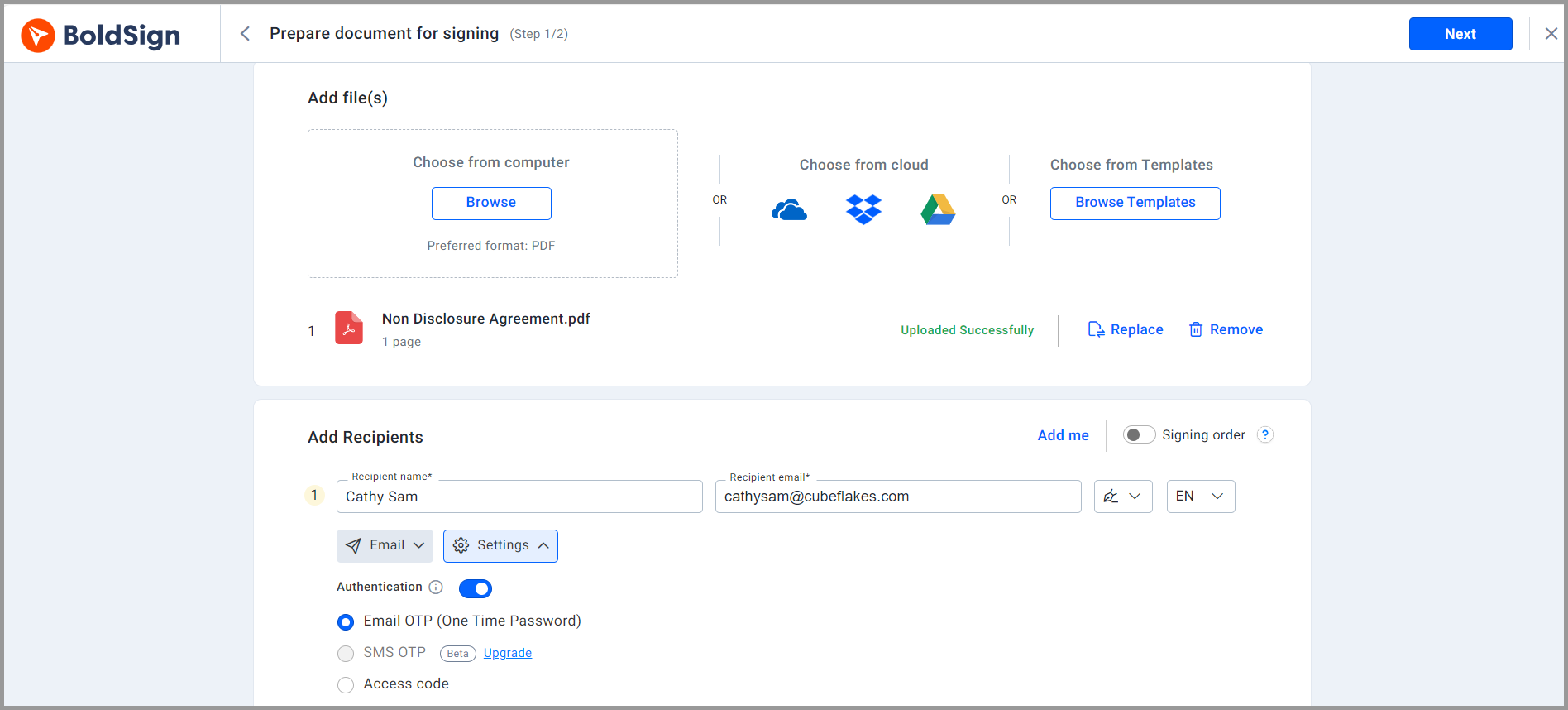 Add authentication during signature request
Add authentication during signature request
For Email OTP, enable it with a single click. The system automatically takes the recipient's email and sends an OTP directly to that email.
Access Code is straightforward. When enabled, the sender must enter a code, which must be personally conveyed to the signer.
For SMS OTP, note that this authentication method is more complex and is available only for paid users. If you're using a free plan, an upgrade to a higher plan is required.
After upgrading the plan, the "Activate" option will become visible. Click on it, and a confirmation dialog box will appear.
Read the information in the dialog box, which incurs a fee of $0.2 per SMS. This fee will be charged along with your billing cycle. Click the 'Enable' button to activate the SMS OTP feature.
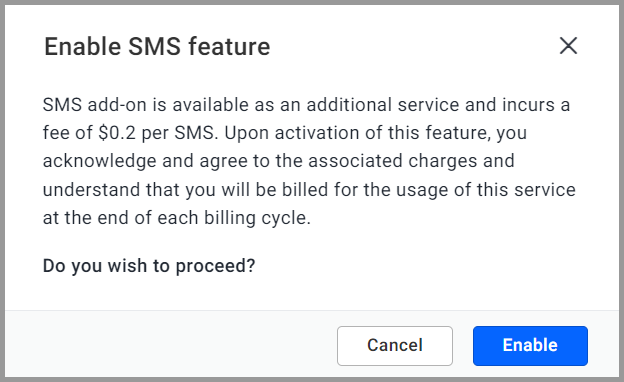 Enable SMS features
Enable SMS features
You can select the SMS OTP option once the SMS OTP feature is enabled. Provide the signer's phone number and select the country code.
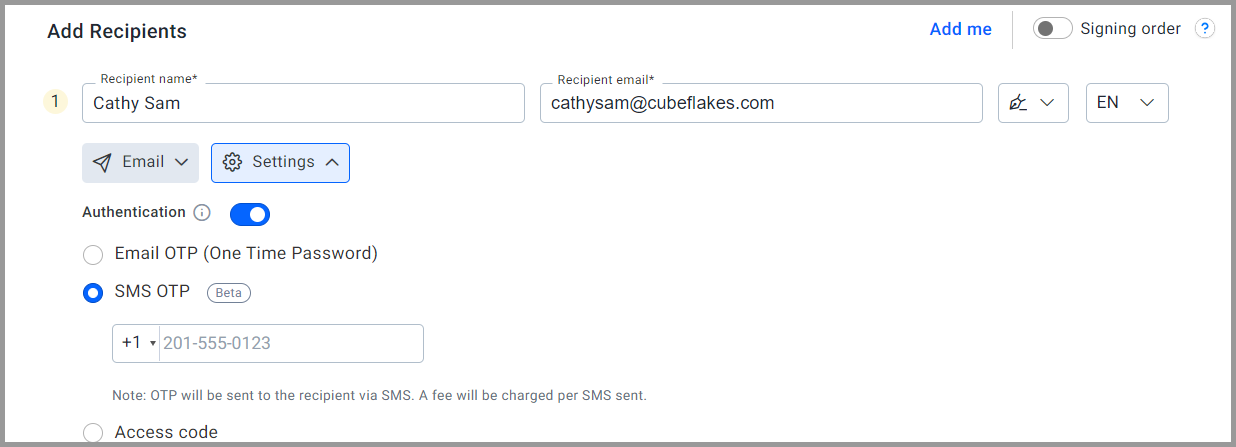 Enable sms OTP feature
Enable sms OTP feature
Upon opening the document, the signer will receive an OTP on the added phone number for authentication.






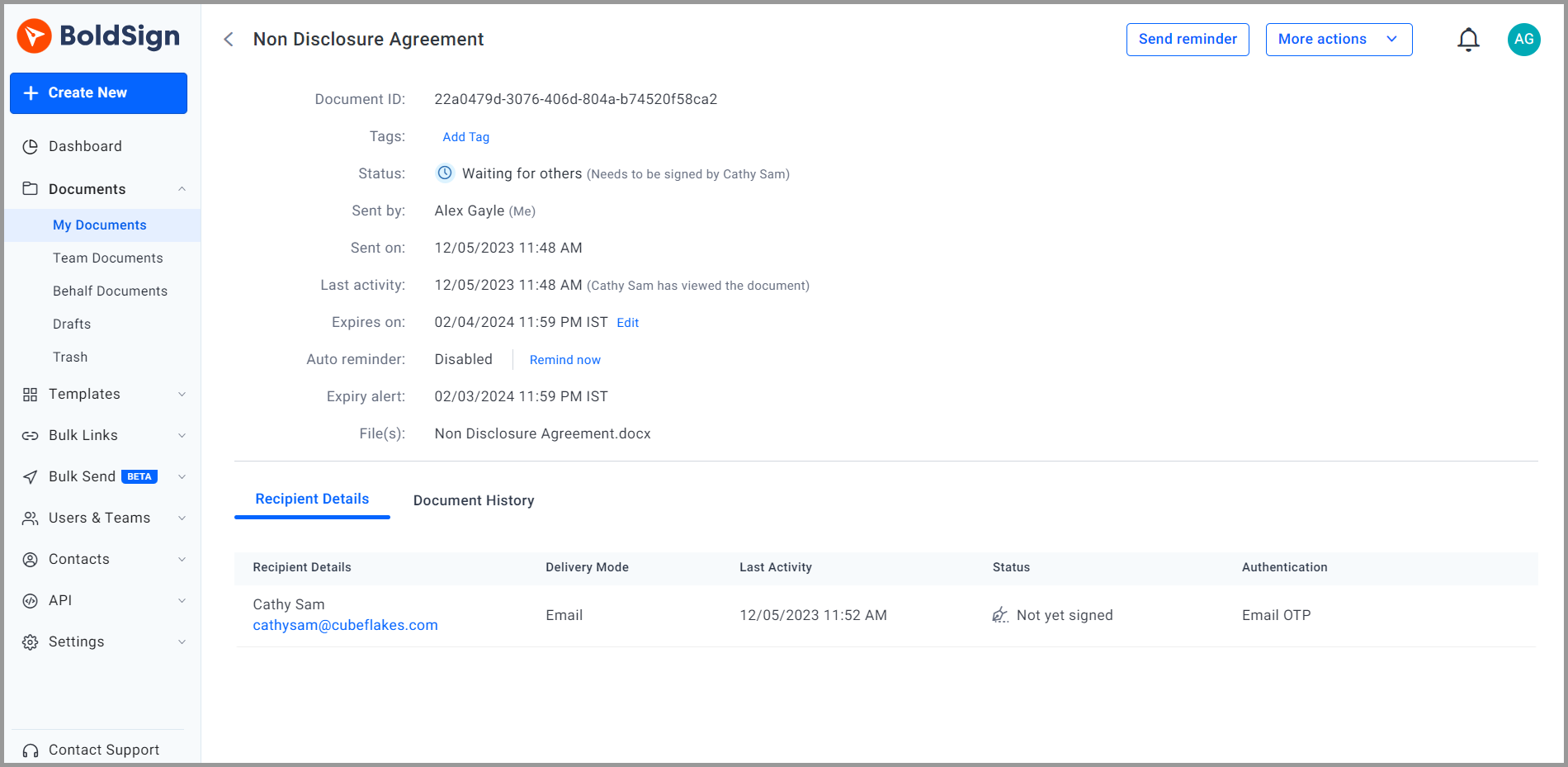


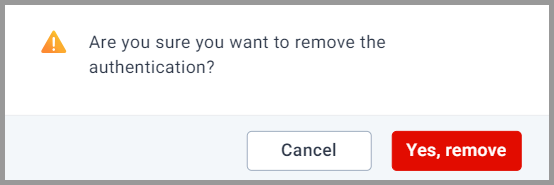
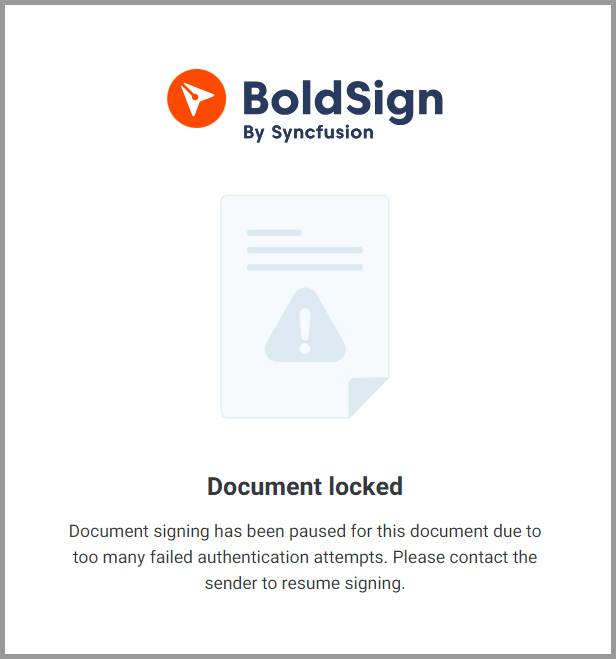


Latest Articles
Demo-Rss
Mandating Signer Authentication When Making Signature Requests via API
How to Send Documents for eSignature with Identity Verification via API